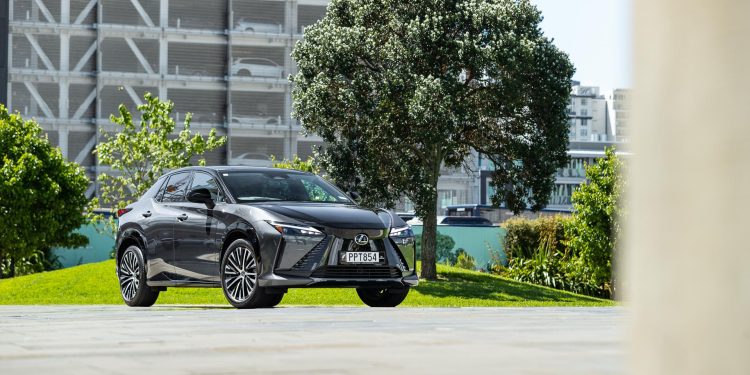2023 Lexus RZ 450e Dynamic review
Words: Kyle Cassidy | Photos: Isaac Western
While strong on electrification with its vast range of hybrids, Lexus has been a slow adopter of full BEVs. That’s changing though. Joining the little UX EV is the new RZ, a bigger and much pricier electric proposition.
While Lexus is promising an all-electric future, its journey towards the goal has started slowly.
But why rush when you’re doing well selling hybrids? Following on from the Lexus UX300e, Lexus has another, larger electric SUV with which to tempt luxury buyers.
The RZ, that’s Z for zero, as in emissions, is the brand’s first dedicated battery-powered model, built on the brand’s new e-TNGA platform, which it shares with the Toyota bZ4X.
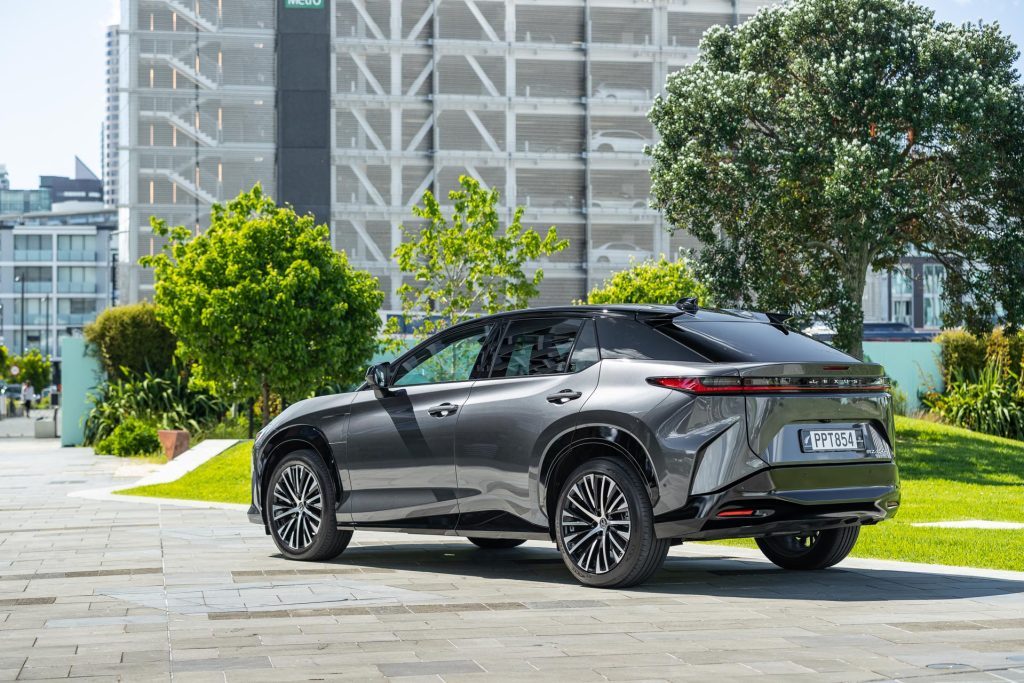
There are two variants of the RZ, both with the same 450e powertrain but differentiated by specification. The Core costs $141,600 while the Dynamic, seen here, is $151,600. For that you get two dozen extras over the Core.
That makes the RZ quite an expensive offering amongst likely rivals such as the BMW iX3 which starts at $118k while a top spec Audi Q4 e-tron is $127k.
Then there’s the physically bigger Merc EQE 300 at $140k and $150k for the AWD 350.
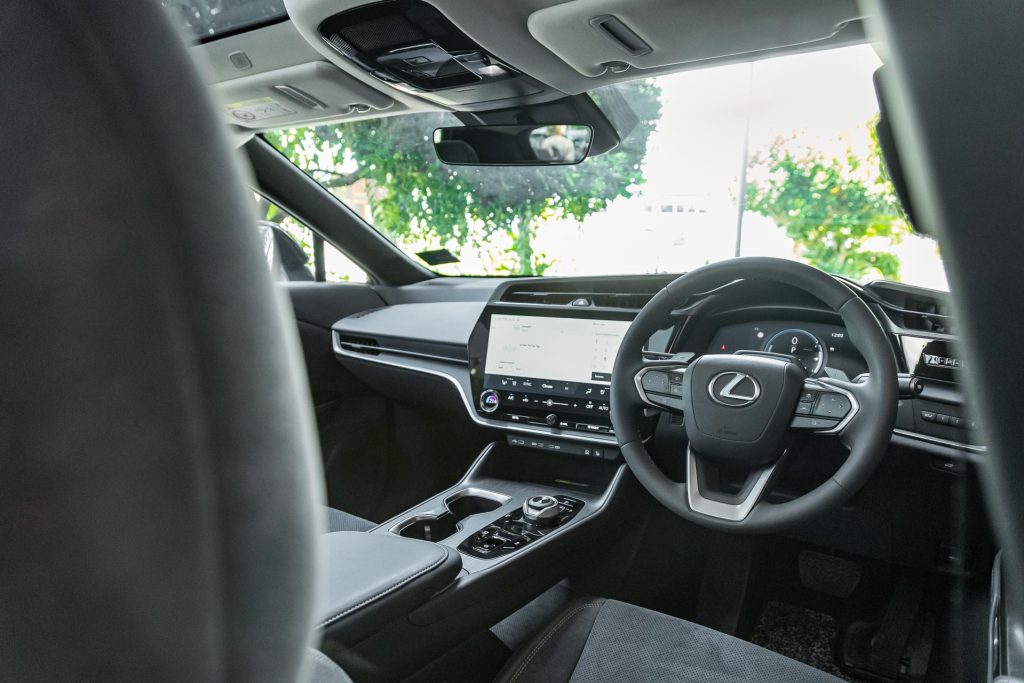
Being German, you can add thousands in options, but the big three are getting better at offering a more replete standard specification, something Lexus has been doing for decades.
We won’t mention the Tesla Model Y as it’s not a luxury class contender.
For size, the RZ is a decent five seater, 4.8 m long and 1.9 m wide, but it’s low and sleek at 1.6m in height.
This looks Lexus familiar but its rakish proportions lend it a more dynamic character than the RX, for instance. The two-tone paint scheme adds a dash of flash but also costs another $2k.
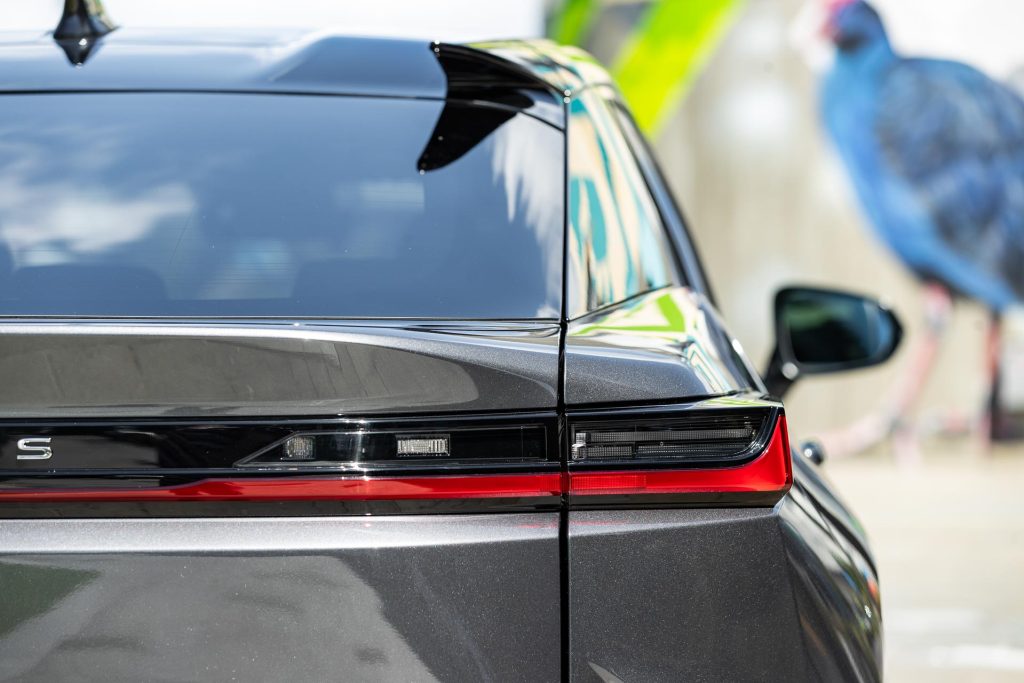
What’s underneath?
The RZ outputs 230kW courtesy of its dual-motor arrangement. Up front is a 150kW/266Nm unit while the motor on the rear contributes 80kW and 168Nm.
It’ll do 0-100km/h in 5.5sec (5.3sec the claim) so it’s certainly quick enough but not rapid like other dual-motor SUVs. Energy is supplied from a 71kWh battery, although the usable capacity is 64kWh.
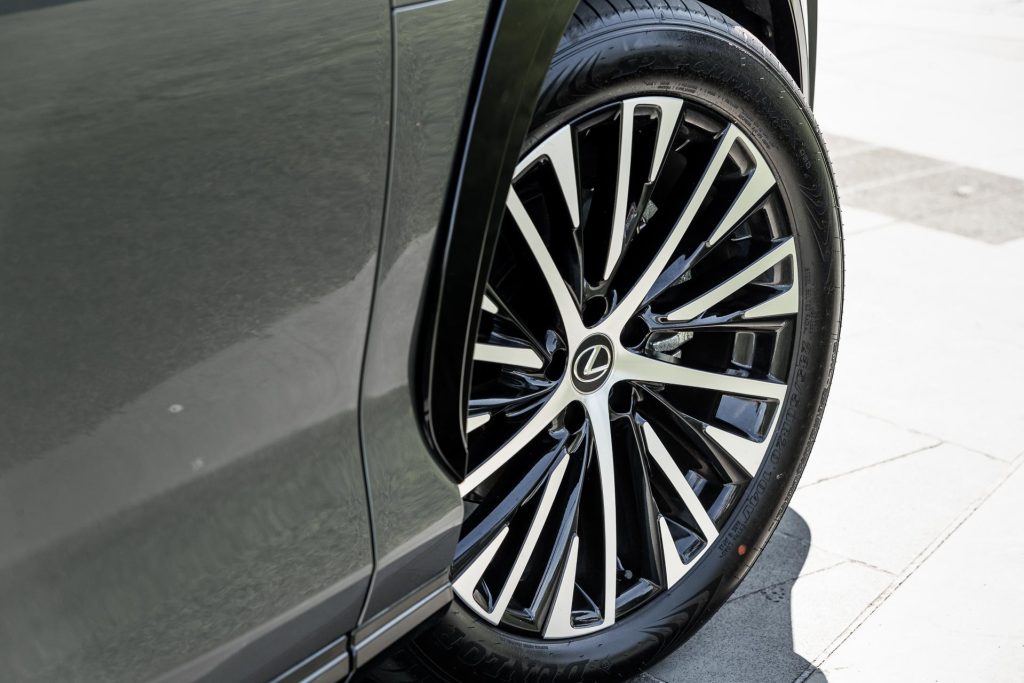
The WLTP range figures are 435km for the Core with 18-inch wheels and 395km for the Dynamic, which rides on bigger, wider 20s.
It can take up to 11kW AC with a three-phase wall box, adding around 45km of range an hour.
Plugged into the wall socket, that’s more like 2kW and 10km of range per hour. It can handle up to 150kW on a DC fast charger, meaning around 30mins for a 10-80 per cent recharge.
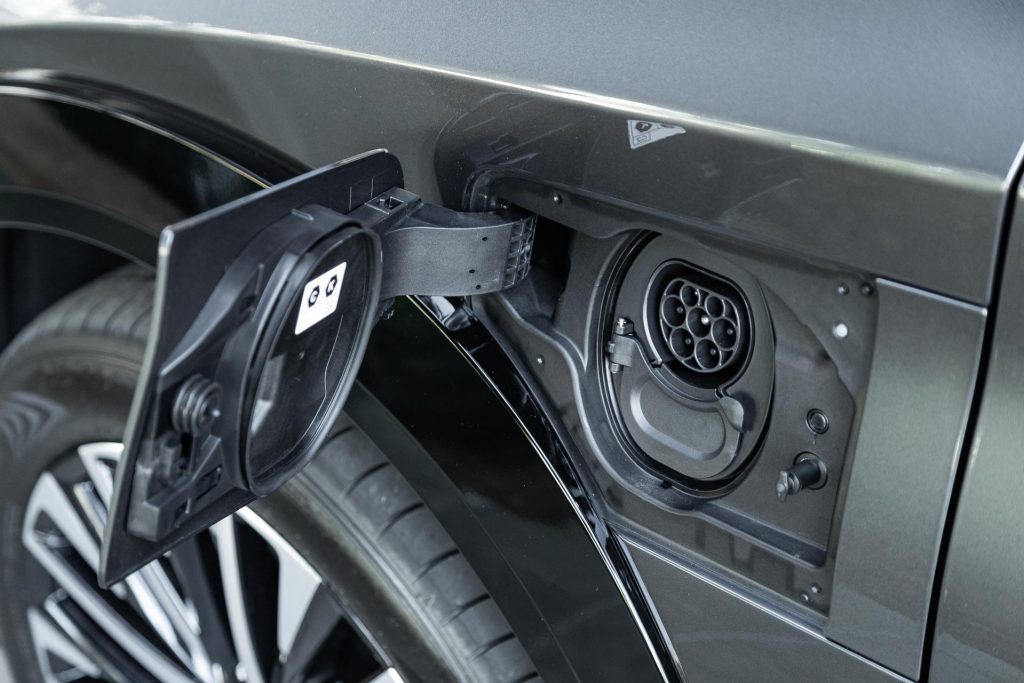
What’s the drive like?
While most luxury electric vehicles are smooth and effortless, the RZ is even more so.
The power delivery is creamy, arriving progressively rather than in an almighty surge yet it’s still quick in the 10-80km/h range. This rides nicely too, the big alloys not hindering your calm progress on poked city streets, and it’s quiet.
The steering is easy also, the weighting fluid but the turning dimensions are a bit large, and the steering ratio is a tad slow these days at 2.7 turns between the lock stops.
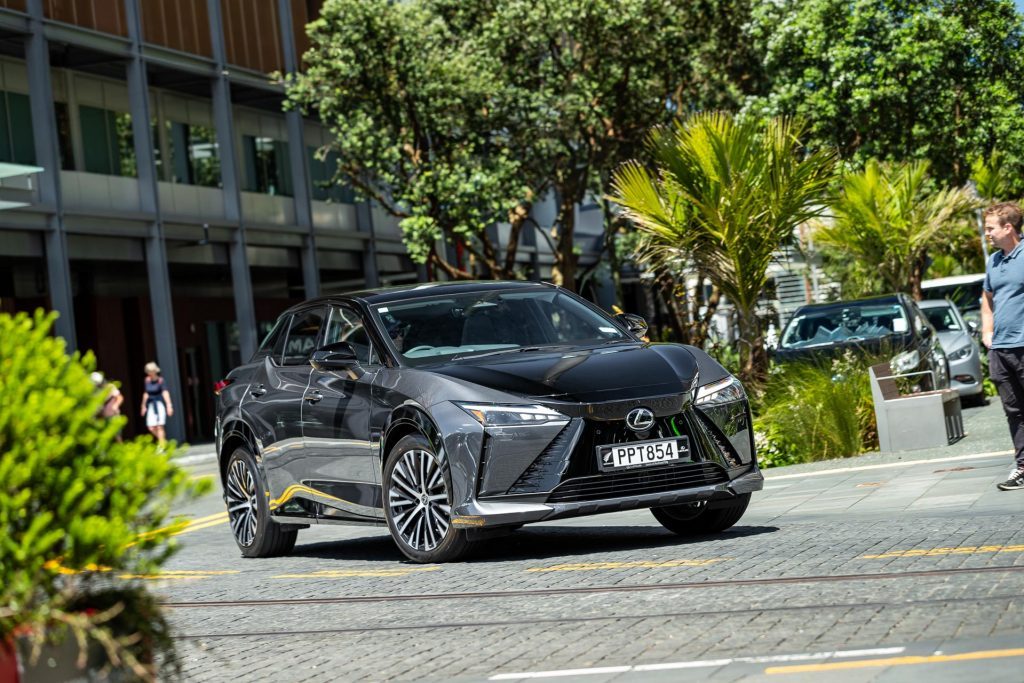
The general operation is all straightforward, not always a given in EVs.
The power button atop the dash could be better sited, though the gear selector is easy to use, even if initially you’ll occasionally push it down and find yourself in neutral. And we’re not sure why it has to beep when you’re in R.
You can adjust the level of motor regen via the steering paddles, the transition into the retardation being smooth, but it’s not particularly strong even in its highest setting.
The blending of the regen and friction brakes needs work too, the pedal feeling a bit weird under foot.
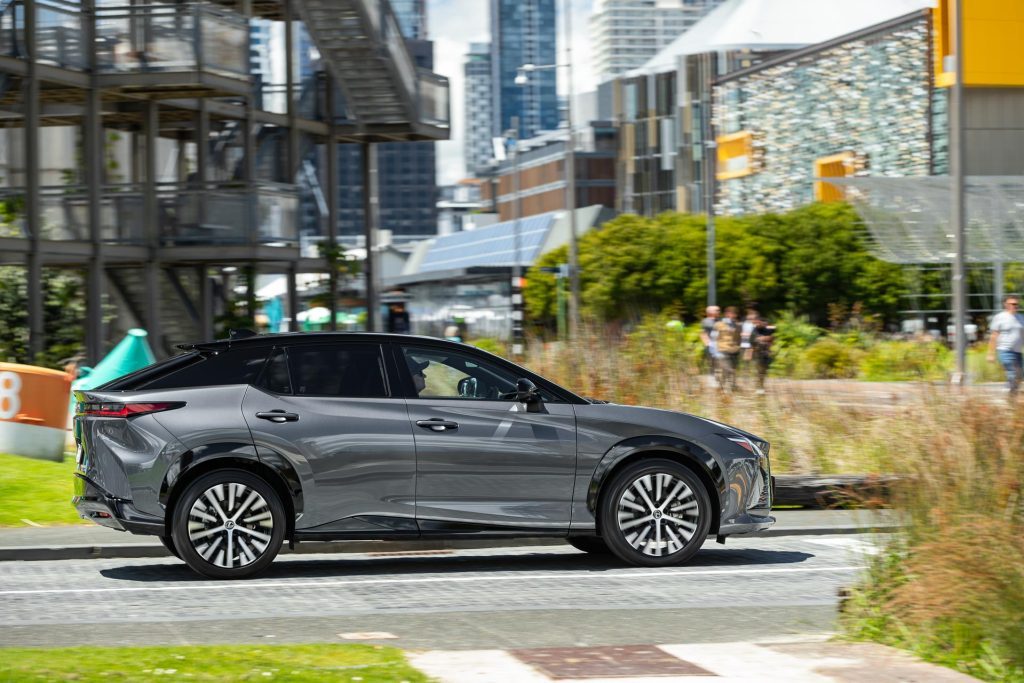
The RZ received a recent five-star safety rating with all the now typical features present. Its driver monitoring system isn’t too persistent, only giving you a discreet nudge when you’re not looking where you are supposed to.
On the motorway, the active cruise with lane tracing is well tuned, though the lane keeping on some highway roads is best disabled (and easily achieved).
Just like in the city, progress on highway roads is sorted, though tyre roar rears its head on coarser surfaces.
The dual-motor RZ has Direct4 all-wheel drive, Toyota Corp’s active torque distribution system to balance traction and stability in tricky situations, sorting the application of torque on each axle and at each corner.
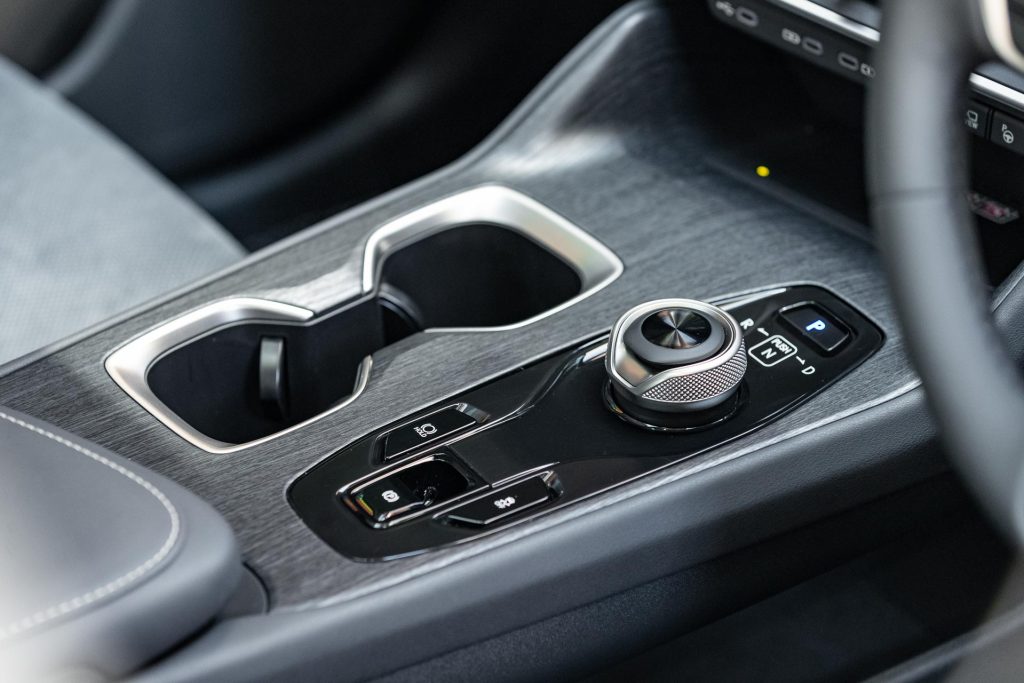
There’s a few degrees of roll heading into the corners, but it settles quickly in the bend, the big tyres and the Direct4 system helping steady its course.
Sport mode adds some throttle urgency and weight to the helm, the assistance of which remains consistent, though the connection is a little vague.
We’d be content to leave it in Normal, the throttle tuning better balanced.
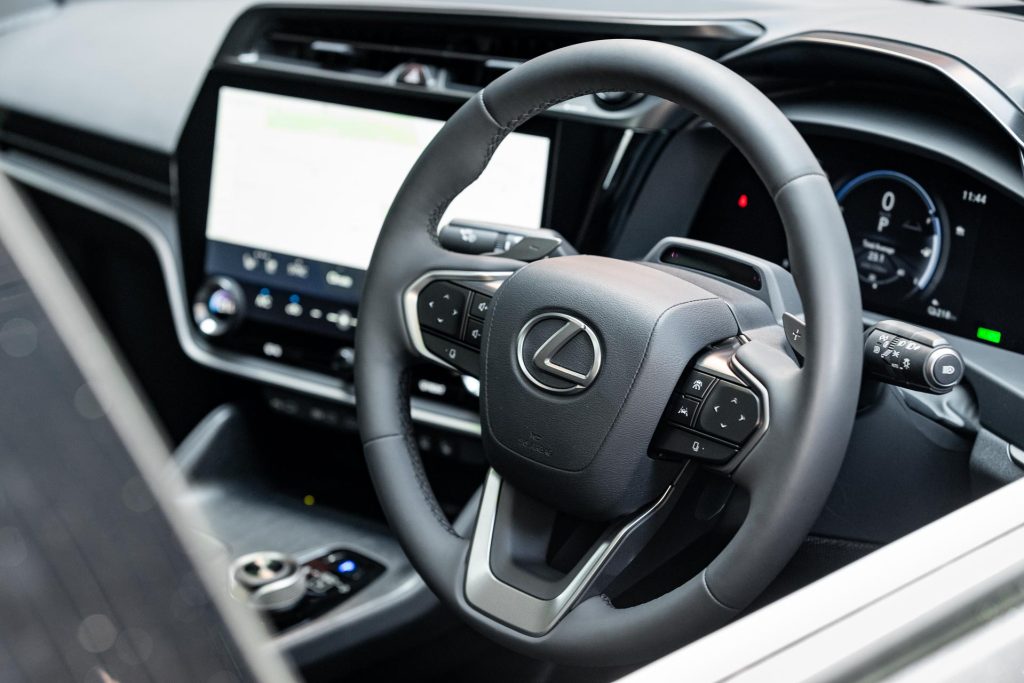
Suitably luxurious inside?
It does look a little barren in the cabin compared with other Lexus SUVs; there aren’t as many design flourishes but the quality is still present.
That said, a secondary door seal managed to dislodge itself and some of the plastics used on the lower half of the cabin look more Toyota grade than Lexus.
The handles on both sides of the door are easy to use, the interior ones particularly so; thumb the release and you can open the door in one straightforward motion.
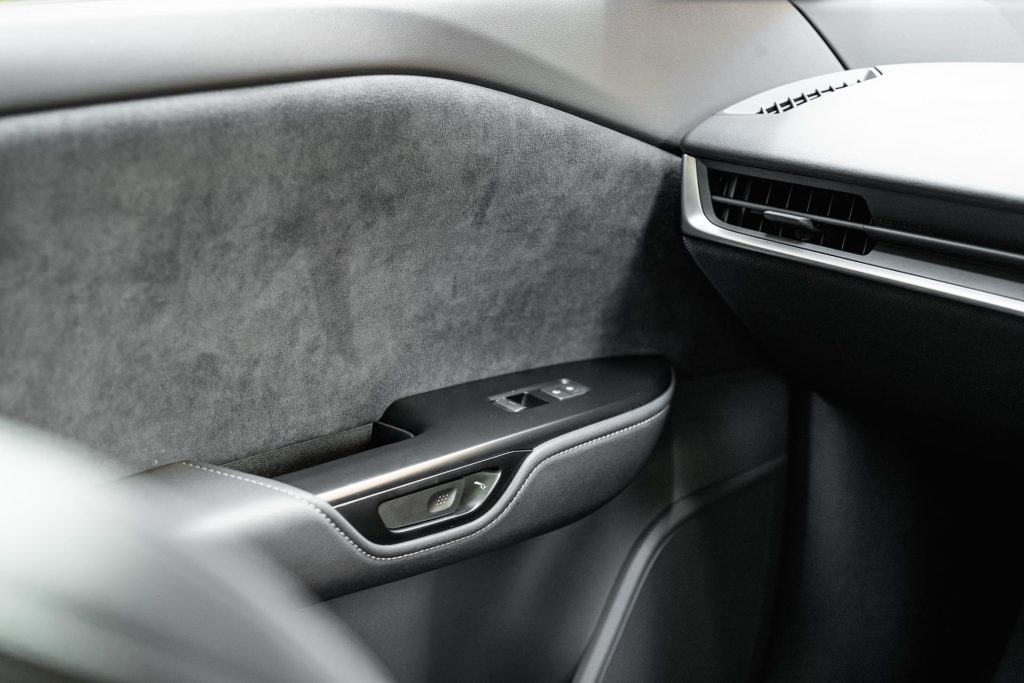
The large format touchscreen is within easy reach from the driver’s seat and traditionalists will like that the climate control functions are ever present along the bottom.
And that there is a knob for controlling the temperature and the volume of the audio. With a straightforward layout, it’s all easy to navigate through and while the resolution and response time are good, it does take time to initiate on start-up.
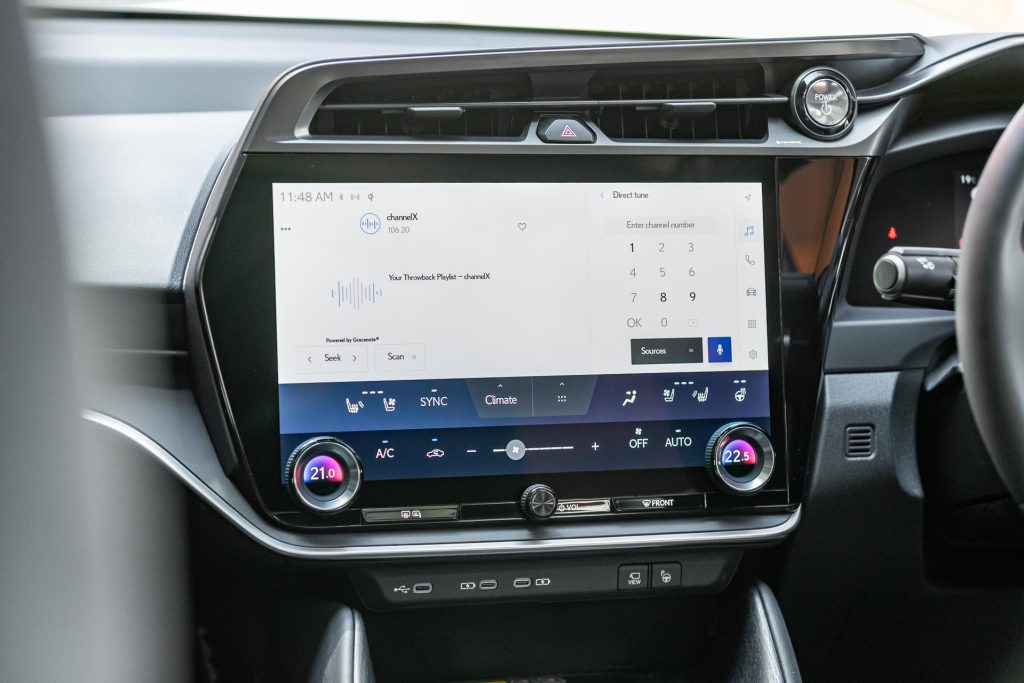
Is it big enough?
RZ has a spacious cabin. Up front on the left, knee room is generous as there is no glove box. Instead you get a ‘knee heater’ with radiant warmth emanating from the lower dash when you switch on the heated seat.
The idea being you heat the area where the passengers are rather than wasting energy with the heater warming the whole cabin.
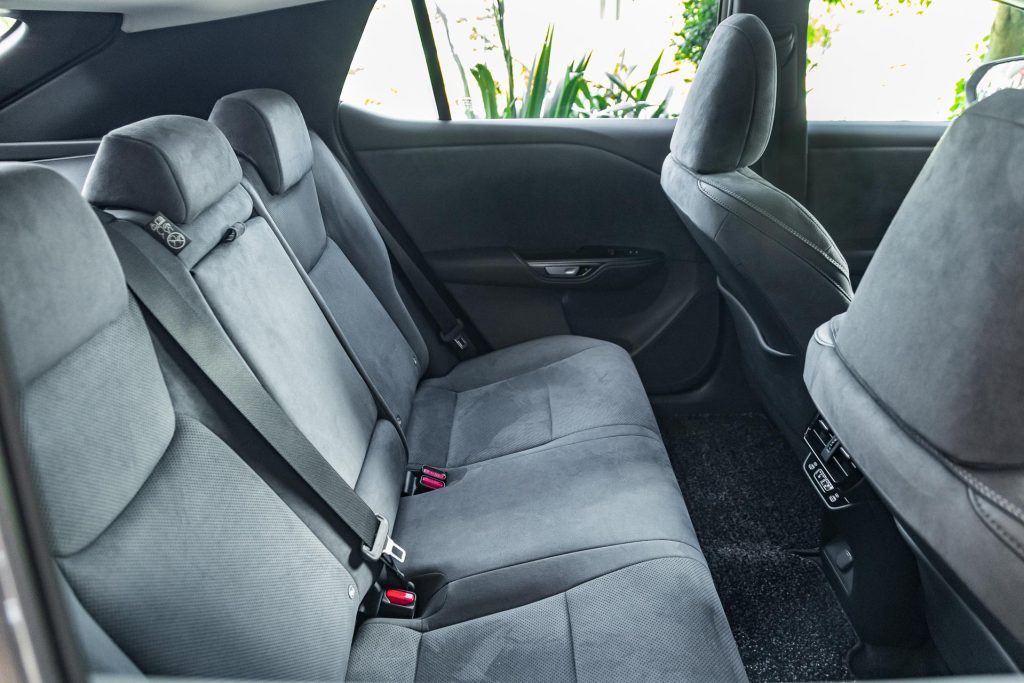
The seat offers up decent support, if a little firm for a Lexus, and some might miss the usual sumptuous leather trimming, for this has a microfibre-like covering (dubbed Ultrasuede) instead.
At least it’s both heated and ventilated. And there are other heated surfaces included, like the rear seat and wheel, and the usual power adjustments.
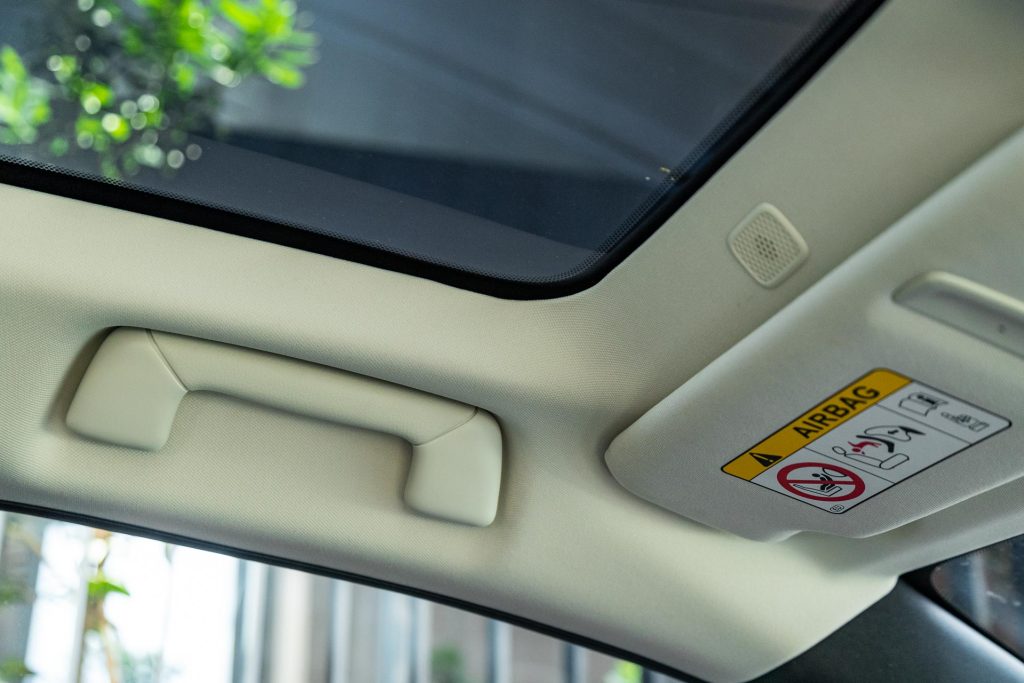
Another unique feature is the panoramic roof’s glare reduction trick. At the touch of a button, the glass turns opaque, the dazzling sun dashed, yet still allowing the light through to help create that airy ambience.
For those light sensitive folk, there is a shade provided, albeit a cover you install by hand.
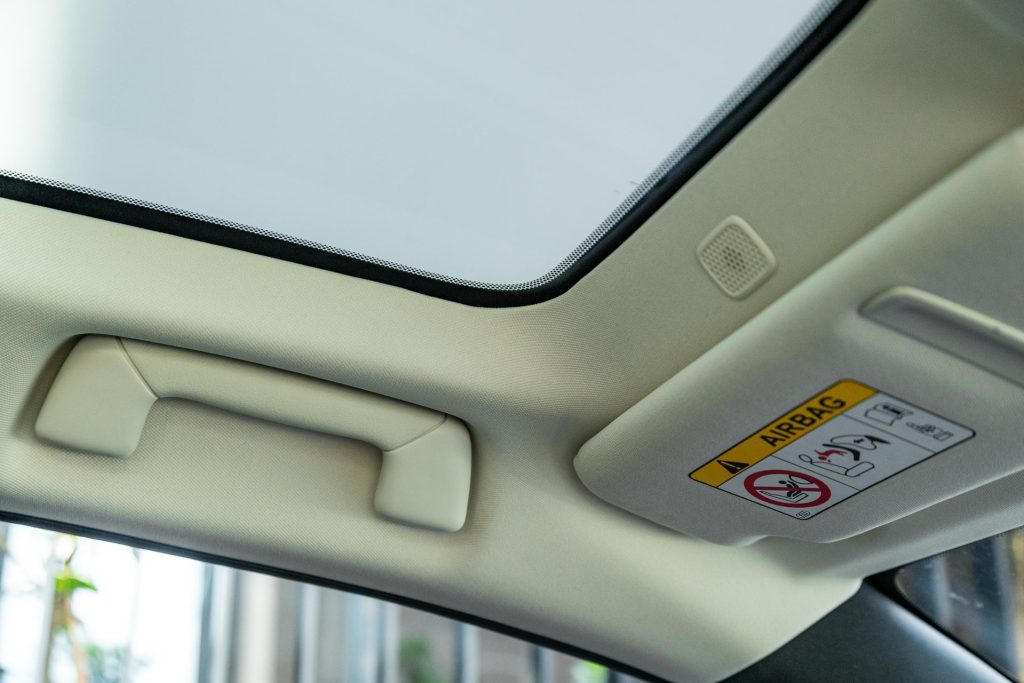
Leg room is of the generous kind in the rear, where there is a comfy perch, a flat floor and yet more USB-C plugs.
There’s enough boot space too at a quoted 522L, the hold both wide and long with some space underneath for cables and other bits and bobs.
The rear seat folds flat and easily, extending the hold out to over 1450L. A tow hook can be attached but the rating is a lowly 750kg max.
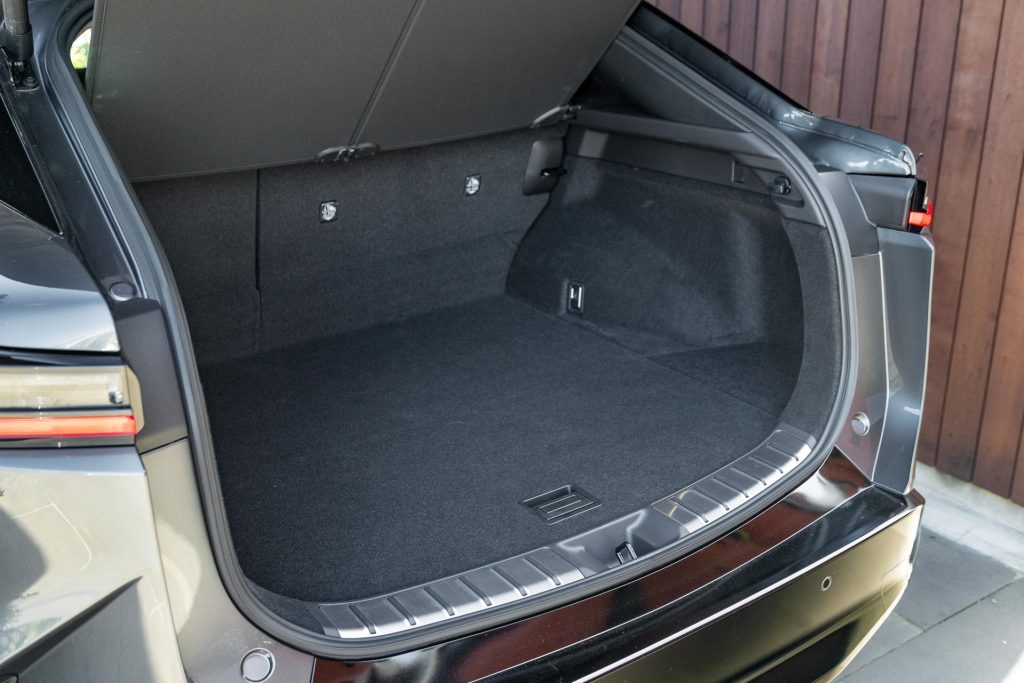
What about efficiency?
While it delivers abundant and readily available go, the RZ has an appetite for amps. Our on-test average was an indicated 24kWh/100km, and that was with a minimal period of ‘thrashing’.
We covered just over 200km during our time with it and the DTE showed 74km when we dropped it back. And interestingly, when we picked it up fully charged, it was showing 280km to empty.
Other sources suggest 280-300km is a real world average, which isn’t particularly amazing for the price.
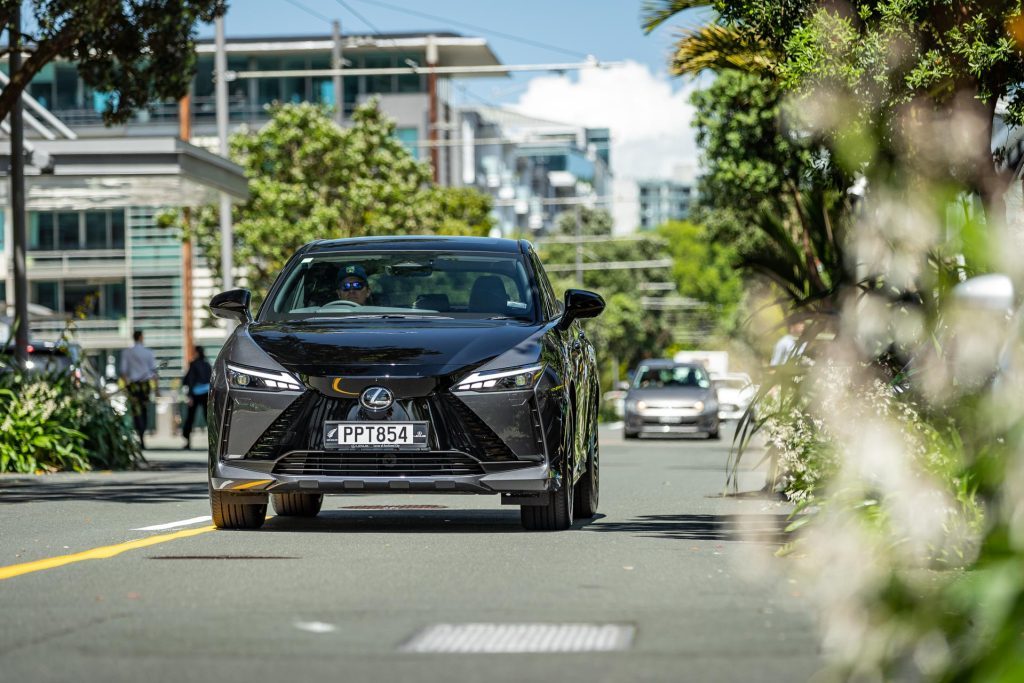
It’ll be okay if your use is predominantly urban in nature, but for those with far-off bolt holes to journey to, best look elsewhere for electric luxury.
| Model | Lexus RZ 450e Dynamic |
| Price | $151,600 |
| Motor | 230kW, 434Nm |
| Battery | 64Wh net |
| Range | 395km |
| Drivetrain | single-speed auto, e-AWD |
| Energy Use | 15.2kWh/100km |
| C02 Output | 0g/km |
| 0-100km/h | 5.51sec |
| 80-120km/h | 3.55sec (101m) |
| 100-0km/h | 36.57m |
| Stability systems | ABS, ESP, TV |
| Safety | AEB, ACC, BSM, LDW, RCTA, ALK, AHB |
| Luggage capacity | 522-1450L |
| Tow rating | 750kg (1000kg braked) |
| Service intervals | 4 years, Unlimited km |
| Warranty | 4 years, Unlimited km |
| ANCAP rating | 5 Stars (2023) |
| Weight | 2110kg (claimed) |
This story first appeared in the February 2024 issue of NZ Autocar magazine.


